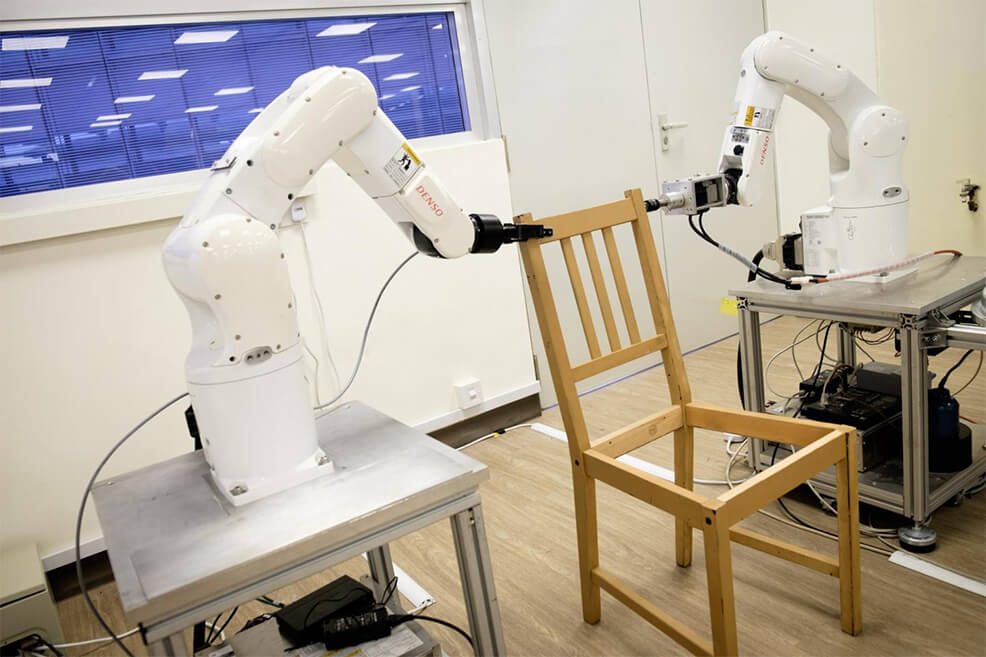
19th April 2018 Chair-assembling robot demonstrated in Singapore Nanyang Technological University (NTU) has built a robot that can autonomously assemble an IKEA chair without interruption.
Designed by Assistant Professor Pham Quang Cuong and his team from NTU’s School of Mechanical and Aerospace Engineering, the robot seen here comprises a 3D camera and two robotic arms equipped with grippers to pick up objects. The team coded algorithms using three different open-source libraries to help the robot complete its job of putting together a chair. The machine assembled IKEA’s Stefan chair in eight minutes and 55 seconds. Prior to the assembly, the robot took 11 minutes and 21 seconds to independently plan the motion pathways and three seconds to locate the parts. “For a robot, putting together an IKEA chair with such precision is more complex than it looks,” explains Cuong. “The job of assembly, which may come naturally to humans, has to be broken down into different steps, such as identifying where the different chair parts are, the force required to grip the parts, and making sure the robotic arms move without colliding into each other. Through considerable engineering effort, we developed algorithms that will enable the robot to take the necessary steps to assemble the chair on its own. “We are looking to integrate more artificial intelligence into this approach to make the robot more autonomous – so it can learn the different steps of assembling a chair through human demonstration, or by reading the instruction manual, or even from an image of the assembled product.”
The robot is designed to mimic the genericity of the human “hardware” used to assemble objects: the ‘eyes’ through a 3D camera and the ‘arms’ through industrial robotic arms that are capable of six-axis motion. Each arm is equipped with parallel grippers to pick up objects. Mounted on the wrists are force sensors that determine how strongly the “fingers” are gripping and how powerfully they push objects into contact with each other. The robot starts the assembly process by taking photos of the parts laid out on the floor to create a 3D map of the estimated positions. This is to replicate the cluttered environment after humans unbox and prepare to put together a build-it-yourself chair. The challenge here is to determine a sufficiently precise localisation in a cluttered environment quickly and reliably. Next, using algorithms developed by the team, the robot plans a two-handed motion that is fast and collision-free. This motion pathway needs to be integrated with visual and tactile perception, grasping and execution. To ensure that the arms grip the pieces tightly and perform tasks such as inserting wooden plugs, the amount of force exerted has to be regulated. This is challenging because industrial robots, designed to be precise at positioning, are bad at regulating forces. Sensors mounted on the wrists help to determine the amount of force required, allowing the robot to precisely and consistently detect holes by sliding the wooden plug on the surfaces of the work pieces, and perform tight insertions. Now that the team has achieved its goal of demonstrating the assembly of an IKEA chair, they are working with companies to apply this form of dexterous robotic manipulation to a range of industries. They hope to deploy the robot to do glass bonding that could be useful in the automotive industry, as well as drilling holes in metal components for aircraft manufacturing. Cost is not expected to be an issue, as all the components in the robotic setup can be bought off the shelf.
Comments »
If you enjoyed this article, please consider sharing it:
|







